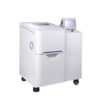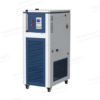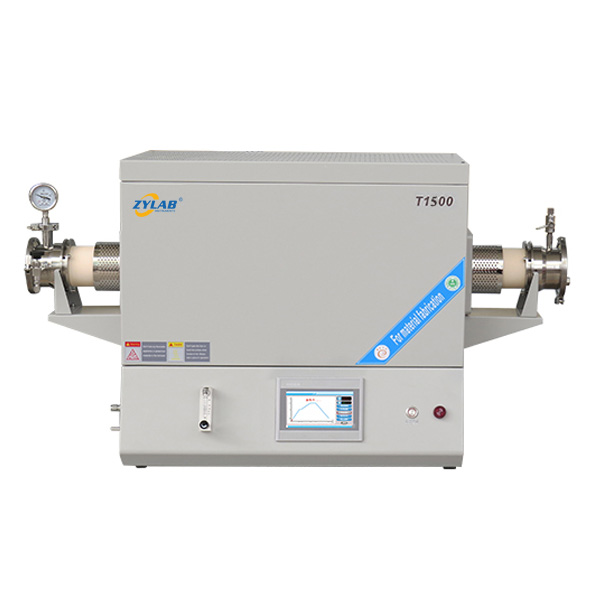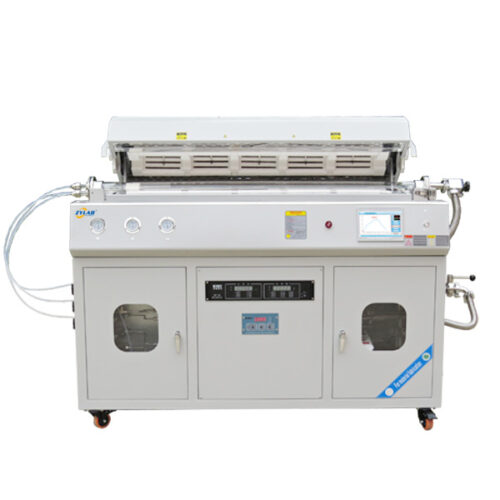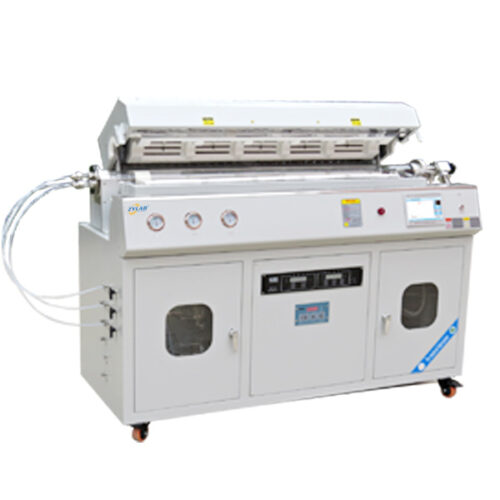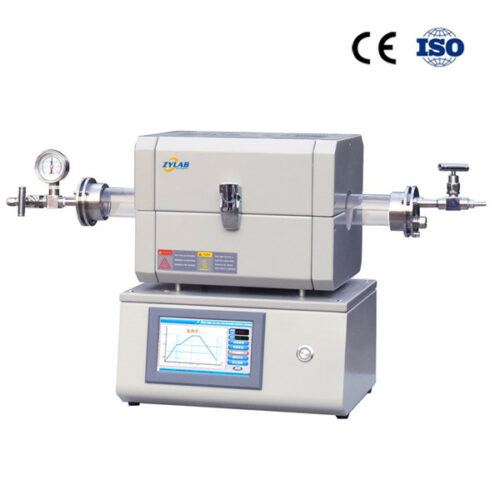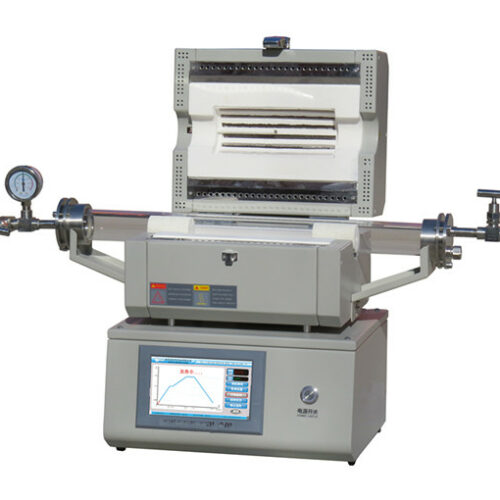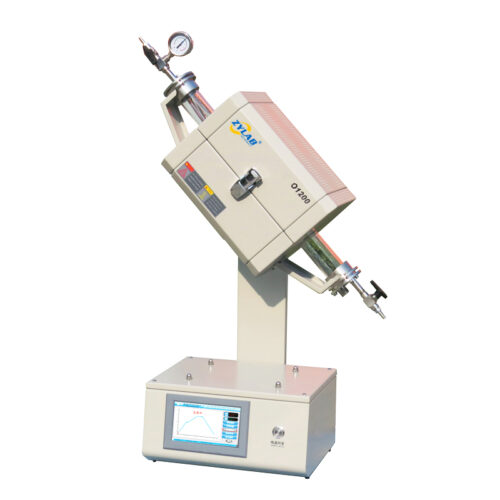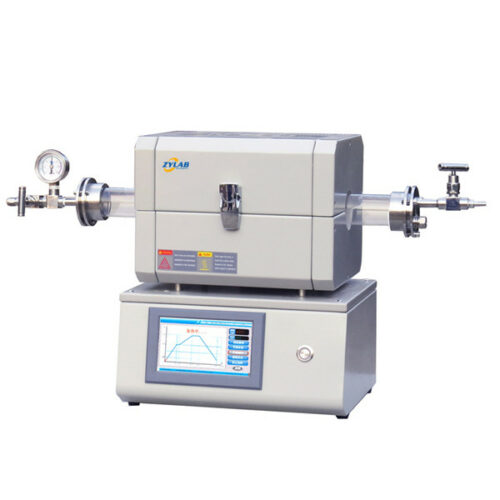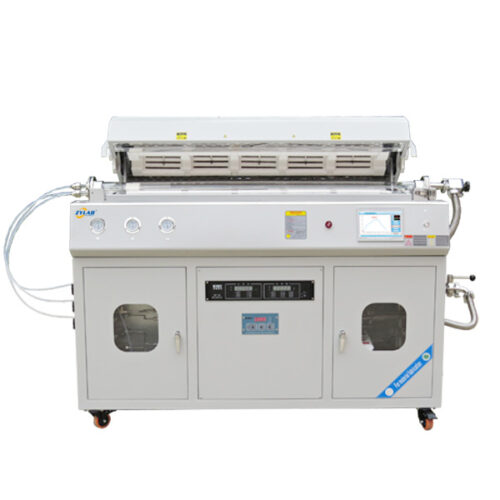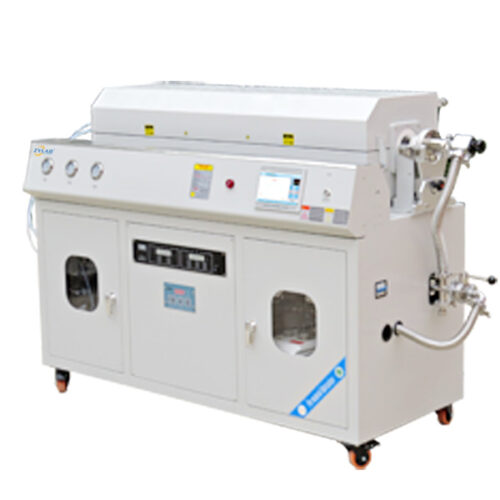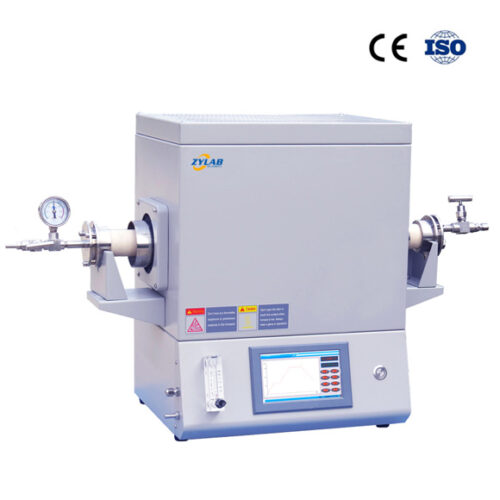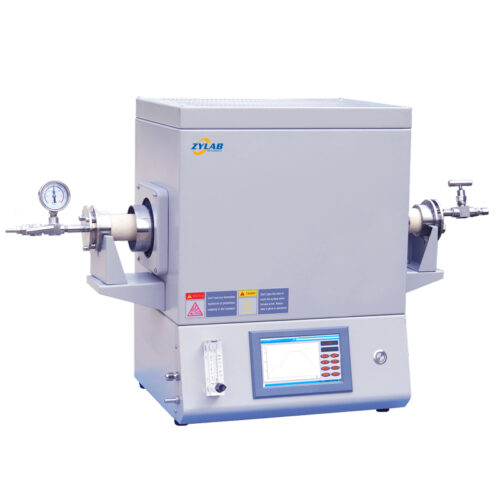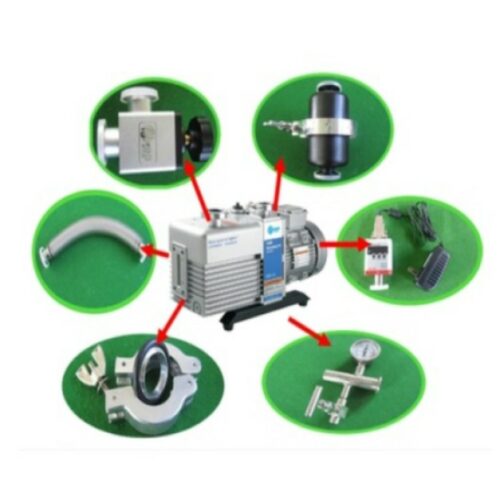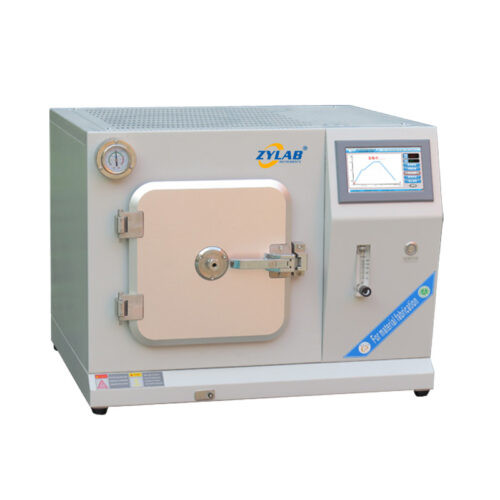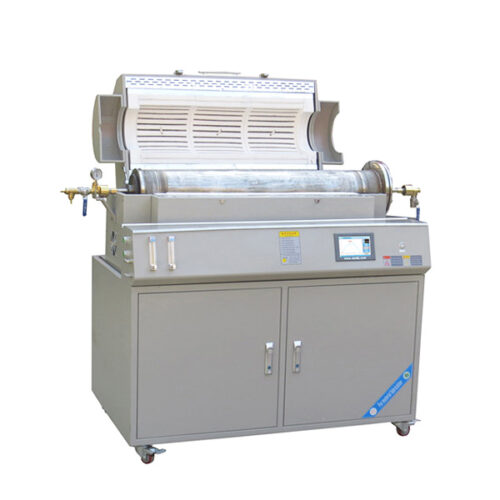1500.C Dual Temperature Zone Furnace with Diameter 100mm Alumina Tube
Introduction:
The intelligent dual-temperature-zone furnace offers balanced temperature fields, low surface temperature, rapid heating and cooling rates, and energy efficiency. It is an ideal product for high-temperature atmosphere sintering, atmosphere reduction, CVD experiments, and vacuum annealing, widely used in universities, research institutes, and industrial enterprises. The furnace utilizes a multi-point temperature control method, ensuring uniform temperature inside the furnace, which effectively enhances experimental results.
Features and Benefits of Dual Temperature Zone Furnace:
- The furnace tube is made of high-purity alumina material, providing excellent corrosion resistance and high-temperature performance.
- High-purity Al2O3 fiber refractory insulation material offers outstanding insulation effects, effectively reducing power consumption.
- The furnace body adopts a dual-layer air cooling structure, helping to quickly lower the surface temperature of the shell.
- The intelligent PID fuzzy temperature control system is operated via a 7-inch touch screen, providing centralized control and intuitive display of “time-temperature” curves.
Technical Parameters:
| Model | Dual Temperature Zone Furnace | ||||
| Power Supply | Single-phase 220V 50HZ | ||||
| Rated Power | 6KW | ||||
| Temperature Sensor | S-type thermocouple φ8*205mm | ||||
| Tmax | 1450℃ | ||||
| Heating Zone | Zone 1:Φ100*225mm Zone 2:Φ100*225mm | ||||
| Furnace Tube | Φ100*1200mm, high purity alumina tube | ||||
| Overall Dimensions | L1414m×H720mm×D514mm | ||||
| Heating Rate | 1℃/H-20℃/Min | ||||
| Weight | 350kg | ||||
| Control System | 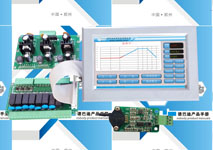
1. Sintering process curve settings: Dynamic display of the set curve; the equipment can store multiple sintering process curves, each of which can be freely set. 2. Sintering can be scheduled for unattended operation. 3. Real-time display of sintering power, voltage, and other information with data recording, which can be exported for paperless records. 4. Remote control and real-time monitoring of equipment status are available. 5. Temperature correction: Non-linear correction of the difference between the main control temperature and the sample temperature throughout the sintering process. |
||||
| Temperature Accuracy | ±1℃ | ||||
| Heating Elements | High-purity silicon carbide rods with excellent acid resistance and corrosion performance. | ||||
| Sealing System | 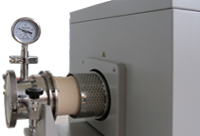 |
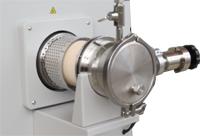 |
|||
| Vacuum Degree: 10Pa (mechanical pump) | |||||
| Pressure Measurement and Monitoring | 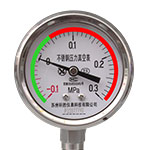 |
Utilizes a mechanical pressure gauge with an airtight structure to protect internal components from environmental influences and debris, with strong corrosion resistance and high-temperature capability. | |||
| Gas Supply System | 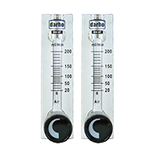 |
Controlled by a float flow meter, integrated with the equipment, and leak-tested before shipment. | |||
| Weight | 350kg | ||||
| Support | Limited one-year warranty with lifetime support (the warranty does not cover consumable parts such as processing tubes and O-rings. Please order replacement parts under related products below). | ||||
Applications:
The Dual Temperature Zone Furnace has several key applications across various industries and research fields, including:
-
Material Science Research:
- Sintering: Used for high-temperature sintering of ceramics, metals, and composite materials to enhance mechanical properties.
- Thermal Treatment: Employed in annealing, tempering, and other heat treatments of materials to modify their microstructure and properties.
-
Chemical Vapor Deposition (CVD):
- Thin Film Deposition: Ideal for CVD processes to deposit thin films of materials such as silicon, carbon, and metal oxides on substrates.
- Nanomaterial Synthesis: Utilized in the synthesis of nanomaterials, such as carbon nanotubes, under controlled atmospheres and temperatures.
-
Atmosphere-Controlled Processes:
- Reduction Atmospheres: Conducting reduction reactions in materials under controlled atmospheres, such as hydrogen or inert gases.
- Oxidation Studies: Used for oxidation experiments of metals and other materials under precise temperature control.
-
Vacuum Annealing:
- Stress Relief: Vacuum annealing of materials to relieve internal stresses and improve mechanical properties without oxidation.
- Purification: Used in the purification of materials by removing volatile impurities at high temperatures in a vacuum.
-
Battery and Energy Research:
- Electrode Material Processing: Ideal for the high-temperature treatment of electrode materials for lithium-ion batteries and other energy storage devices.
- Solid-State Electrolyte Synthesis: Used for synthesizing and processing solid-state electrolytes under controlled atmospheres.
-
Glass and Ceramic Processing:
- Glass Annealing: Used in the annealing process of glass to remove internal stresses and improve durability.
- Ceramic Firing: Employed for the controlled firing of ceramic materials to achieve desired mechanical and thermal properties.
-
Advanced Manufacturing:
- Additive Manufacturing Post-Processing: Used for heat treatment of 3D-printed metal and ceramic parts to improve their properties.
- Composite Material Curing: Applied in the curing process of composite materials, ensuring uniform temperature distribution.
-
Semiconductor Industry:
- Wafer Processing: Utilized in the processing of semiconductor wafers, such as diffusion and oxidation processes.
-
Research and Development:
- Material Testing: Used for various material testing experiments under controlled high-temperature environments.
- Prototyping: Ideal for research and development of new materials and processes in laboratory settings.

